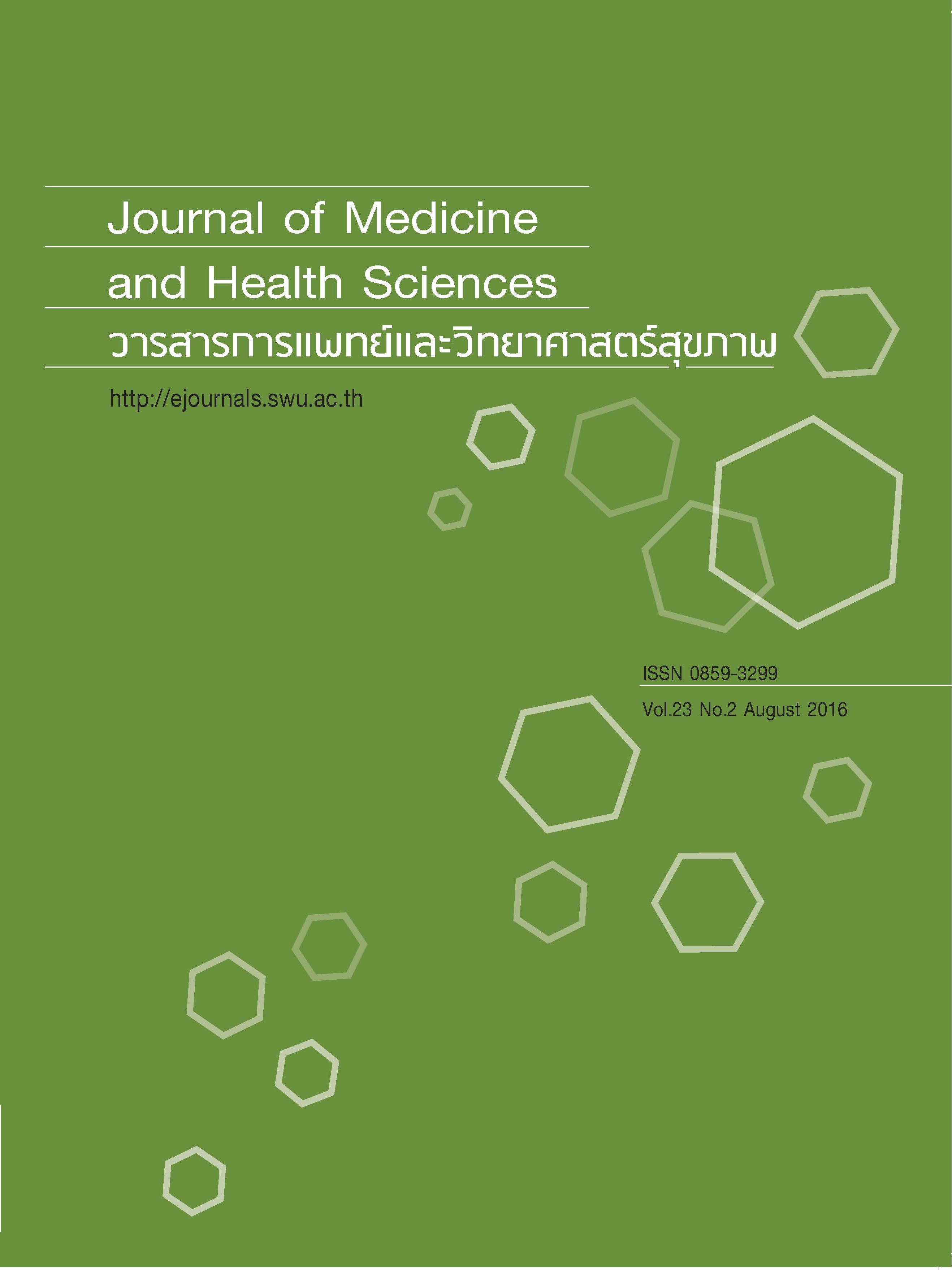การชันสูตรศพที่พบในน้ำที่มีบาดแผลเพื่อหาสาเหตุการเสียชีวิต Autopsy the body with wound discovered under the water for investigating the cause of death
Abstract
บทคัดย่อ ศพชายชาวมองโกลอยด์ ถูกพบในน้ำ ตรวจพบบาดแผลถูกฟันบริเวณ คาง มือ ลำคอ และหัวเข่า พบลักษณะเน่าเผยให้เห็นกระดูกบริเวณใบหน้า ผู้ชันสูตรพลิกศพมีหน้าที่ชันสูตรเพื่อให้ทราบว่าผู้เสียชีวิตเป็นใคร เสียชีวิตเวลาใด สถานที่พบศพเป็นสถานที่เสียชีวิตหรือไม่ สาเหตุและพฤติการณ์การเสียชีวิตคืออะไร จากการตรวจบาดแผลถูกฟันสามารถบอกได้ว่าเกิดก่อนการเสียชีวิตหรือไม่ โดยการตรวจหาปฏิกิริยาแสดงการมีชีวิตด้วยกล้องจุลทรรศน์ ร่วมกับการตรวจทางเคมีอื่น ๆ ซึ่งมีข้อจำกัดในการตรวจศพที่พบในน้ำ เนื่องจากมีการชะล้างเลือดและสารเคมีออกไป และศพมีการเสื่อมสลายจากการเน่า บาดแผลสำคัญที่ช่วยในการแปลผลว่าบาดแผลดังกล่าวเกิดก่อนการเสียชีวิตในศพรายนี้คือบาดแผลจากการป้องกันตัว และสามารถแยกบาดแผลถูกฟันกับบาดแผลที่เกิดจากใบพัดเรือได้ เนื่องจากมีลักษณะเฉพาะที่แตกต่างกันAbstract A mongoloid male body was discovered under the water. The examination uncovered chopped wounds in the chin, hand, neck and knee. The body was decomposed with exposed facial bones. The examiners needed to identify who the victim was and the time of death. Where the death took place (primary crime scene or secondary crime scene)? What was the cause and manner of death? The presence of vital reaction in chopped wounds could determine when the injury occurred and whether during antemortem or postmortem conditions.Vital reactions were originally checked; by optic microscopic examination, additional histochemistry markers, enzymatic markers and biochemistry markers. The examinations were limited due to autolysis and putrefaction including hence blood and chemicals would have been washed away. The defense wound found on the victim’s right hand played the most important role in this case and proved that the victim was conscious when the homicide took place. The defensive chopped wound would be different characteristics from the wound which may have been caused by a boat propeller.Issue
Section
Case Report


